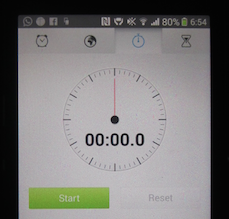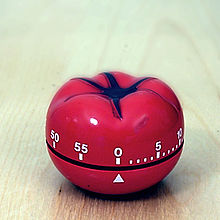“We procrastinate those things that make us a little bit uncomfortable. Think about something you don’t particularly like, and the pain centres of your brain light up so you shift and narrow your focus of attention to something more enjoyable. This causes you to feel better, at least temporarily”.
Sadly the long-term effects of habitual avoidance can be nasty. When you put off your tasks it can become even more painful when you think about doing it later or doing too many pending tasks.
What makes you get into the habit of procrastination? Make a list of all the tasks that you are procrastinating right now. Now write down the reason why you are putting off these tasks for another day. Next ask yourself – are you focusing on the end product or focusing on the process. You will see that the reason for your procrastination is that you are focusing on the end product – say “completing a project” or “creating a presentation”. Now change the focus to process. Start working on the project without having to think about the completion part.
Process Vs Product
Process means, the flow of time and the habits and actions associated with that flow of time. As in, I’m going to spend 20 minutes working. Product on the other hand is an outcome, for example, a project report that you need to finish.
To prevent procrastination you should avoid concentrating on the product. Instead, your attention should be on building processes. Processes relate to simple habits, habits that coincidentally allow you to do the unpleasant tasks that need to be done. For example, lets say you have to finish a project report and you don’t like preparing reports so you put off working on the report. You tell yourself “It’s only a two page report, that should not be too hard to complete.” Your challenge therefore is to avoid focusing on the product – the Project Report.
The product is what triggers the pain that causes you to procrastinate. Instead, you need to focus on the process. In simple terms this means that you get into the habit of putting effort in writing small parts of the report, using short periods of time so that you are working on a process and not worrying about the report.
By focusing on the process rather than the product, you allow yourself to back away from judging yourself – “Am I getting closer to finishing?” And instead you allow yourself to relax into the flow of the work. The key is when a distraction arises, which inevitably will, you want to train yourself to just let it flow by.
One of the easiest ways to focus on the process is to focus on doing a Pomodoro, a 25-minute timed work session.
Pomodoro Technique
 The Pomodoro technique is a time management method developed by Francesco Cirillo, a developer, entrepreneur and author, in the late 1980’s. The key to using the Pomodoro technique is to break down work into intervals of 25 minutes each with a short break or 3 – 5 minutes. Basically, a 25 minute period of uninterrupted focus, followed by a few minutes of relaxation.
The Pomodoro technique is a time management method developed by Francesco Cirillo, a developer, entrepreneur and author, in the late 1980’s. The key to using the Pomodoro technique is to break down work into intervals of 25 minutes each with a short break or 3 – 5 minutes. Basically, a 25 minute period of uninterrupted focus, followed by a few minutes of relaxation.
The benefit of using this technique is that 25 minutes you stay focused on the process and not get distracted. There could be distractions in the form of phone calls but you can choose to pick up the call or call the caller after your 25 minutes are over. When you stay focused on these 25 minutes you will not be tempted to check your mail or phone messages, which means more productivity in that 25 minutes.
The better way to plan using this technique is to do your to-do list on the previous day and then decide which tasks need the Pomodoro technique. In doing so you would have decided on the important tasks, which need attention and then scheduled those tasks at a time when you do not have your meetings or other engagements. It will be useful if you try to have two or three 25 minute slots to complete the task.
Here is how to get started:
- Choose a task to be completed
- Set the pomodoro (timer) to 25 minutes
- Work on the task till you the timer rings or you see 25 minutes on your timer.
- Take a short break (3 – 5 minutes)
- Every four pomodoros take a longer break (20 – 30 minutes)
Repeat this process over the course of the day and you actually get a lot accomplished – and also have breaks which you can use creatively to do some fun task like reading up an article on your hobbies or just walking around to exercise your legs.
You can set the timer on your mobile phone or use pomodoro timers and apps that you can download.
Let me tell you since I have started using the Pomodoro technique I have been able to complete tasks at a much quicker pace and difficult tasks don’t scare me that much.
“Procrastination can be a single important, bad habit that influences many important areas of your life. If you improve your abilities in this area, many other positive changes will gradually begin to unfold”.




Leave A Comment